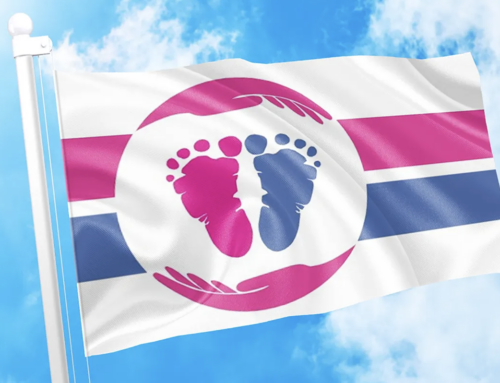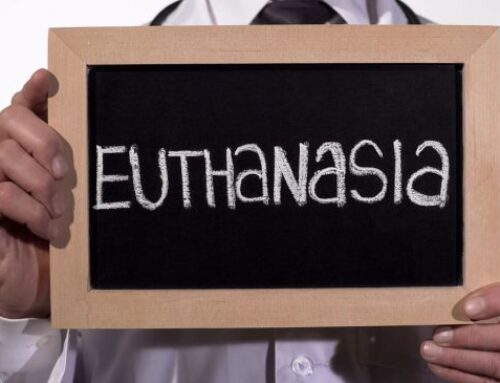During 1994, the Senate Committee on Euthanasia and Assisted Suicide heard much evidence and many arguments from more than 120 individuals and groups, the clear majority of whom supported the current law.
Sanctity of Life:
Sanctity of life arguments featured prominently. Some of these were specifically Christian in nature, some were Jewish, others appealed to Canadian tradition, while others appealed to reason alone. Other argued that the right to life is the basis of all other rights and therefore there can be no rights after its revocation.
Pro-euthanasia witnesses (PEWs) responded with various arguments, including the claim that, in a pluralistic society one cannot base law on religion. Another argument was that life was valuable, but not the highest value, and is, in fact, less valuable than personal autonomy. Others argued that we already kill human beings, such as with abortion, and ridiculed the use of the sanctity of life arguments in a country that performs and pays for 100,000 abortions each year.
Slippery Slope:
The slippery slope argument was probably the most repeated anti-euthanasia argument repeated by the Anti-euthanasia witnesses’ (AEW’s) arguments. They claimed that one crosses a great divide by sanctioning intentional killing, and that once the barrier to killing starts descending, it will not stop. Society will become increasingly desensitized to murder, they said, and the categories of legitimate subjects will constantly broaden. Many said legalizing abortion was the first step in this process, as well as exemplary to the slippery slope at work. Witnesses also pointed very frequently to Holland and 1930’s Germany as evidence. Critics presented various challenges to the slippery slope argument.
Safeguards:
The other most frequent argument of AEW’s was that safeguards would never work. Some potential problems pointed to included pressure on the elderly from families or society to “move along,” problems with determining competency and recognizing depression, the possibility of unawareness of or failure to try other treatment options, and possibilities of dramatic recovery, new medical developments, and wrong prognosis. Several witnesses argued that the courts will strike down as discriminatory any categorical safeguards established by Parliament. PEW’s argued that effective safeguards could be found. A few said there should be no categorical safeguards, since these would serve to devalue those groups.
Patient/Doctor Relationship:
Many AEW’s said changing the law would undermine the doctor-patient relationship and hence the entire medical profession, because doctors would, for the first time, posses the power to kill and adopt the role as killers of their patients. Most PEW’s dismissed these concerns and foresaw no problem with trusting doctors; some said legalizing euthanasia and assisted suicide would increase patient trust.
AEW’s cited Holland’s experience time and again against amending the Criminal Code with a plethora of statistical claims, but several PEW’s, including Dutch politicians, medical professionals and visitors to the country, presented directly contradictory statistical claims.
Some witnesses said society’s attitude towards death needs changing and that we need to resocialize dying, so people grow up understanding it as an inevitable part of life, and so looking after the dying becomes an ordinary part of community life once again.
Personal Autonomy:
The most frequent argument by PEW’s was that of personal autonomy. There were many claims that everyone has a fundamental, innate right, which the Charter of Rights guarantees, to self-determination/freedom of choice/personal autonomy, entailing the right to determine the time and manner of one’s death. AEWs countered this argument in different ways, sometimes by conceding the existence of a right to personal autonomy, but saying it must be balanced against other people’s right to life, and granting a right to personal autonomy, but saying it must be balanced against other people’s right to life, and granting a right to assisted death would lead to violations of many people’s right to life. Others rejected the personal autonomy principal and argued rather that the classic understanding of liberty entailed restrictions on freedom.
Numerous witnesses argued that autonomy is fundamentally contradictory to the inextricably intertwined nature of actual human society. Others argued that since life is a prerequisite to the possession of autonomy, a right to personal autonomy cannot supersede the right to life. Many contended that is always a communality, and never purely individual event. One witness suggested that a valid autonomy argument would require the existence of a real choice to live without suffering, but that when someone is confined to a “living hell” where death is the only way out, no real choice exists. Another AEW’s response was that legalizing euthanasia would not give anyone the right to die, but would rather give a few people the right to kill. Some PEWs said there exists a right to commit suicide. Many AEWs countered that such a right would entail an obligation to help people commit suicide and mean any physical attempts to prevent people from killing themselves would be a violation of their rights and hence immoral.
Pain:
The next most frequent pro-euthanasia argument was that legal changes were necessary for people to find relief from unbearable suffering. Many palliative care professionals attacked this argument, saying that about 95% of all pain is controllable and that there was no need nowadays for anyone to suffer physically during the dying process. They called on the state to ensure high quality palliative care. PEWs argued that even excellent, ubiquitous palliative care would not completely remove demand for euthanasia, because there will still be “rational” suicidal desires.
Frequency of Request and Practice:
There was major disagreement over the frequency of genuine requests for assistance in dying. Doctors and nurses who opposed euthanasia invariably reported rarely or never being genuinely asked for it, whereas health care professionals who supported it reported frequently being asked for accelerated death.
There was similar disagreement over the frequency of practice of euthanasia and assisted suicide in Canada. Once again, AEWs repeatedly claimed doctor-assisted death was rare or non-existent, whereas PEWs contend that it is occurring constantly. Many of this latter group argued that “back-alley euthanasia” was a major problem. PEWs presented many anecdotes of people who had experienced tremendous suffering and made repeated, apparently lucid euthanasia requests, while AEWs presented many anecdotes about amazing recoveries from apparently “euthanasia-suitable” situations.
Disabled Groups:
A few witnesses, notably some groups representing the disabled, argued for legalizing assisted suicide but not euthanasia, although most witnesses thought the two were ethically and legally identical. Several handicapped groups testified that disabled people are divided over assisted suicide; they want the control they see it offering- a control they said is denied them throughout their lives – but they see themselves as extremely vulnerable to involuntary euthanasia since many members of society view their lives as not worth living. They all oppose euthanasia , because they would not maintain control.
Definitions:
Most witnesses defined euthanasia as a compassion-motivated act to cause someone’s death at the person’s request. A few witnesses included “passive euthanasia” – omissions of reasonable treatment to bring about death – as a form of euthanasia, through most witnesses said withdrawal or withholding of treatment at the patients request or where considered futile by doctors is now regarded as good medical practice. These witnesses did add that law is not clear on exactly when treatment can be withdrawn and that exact criteria be set. There was testimony that “passive euthanasia” is occurring routinely with disabled babies in Canadian hospitals.




